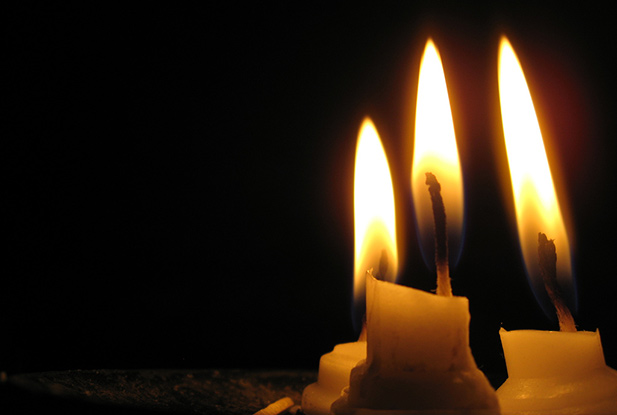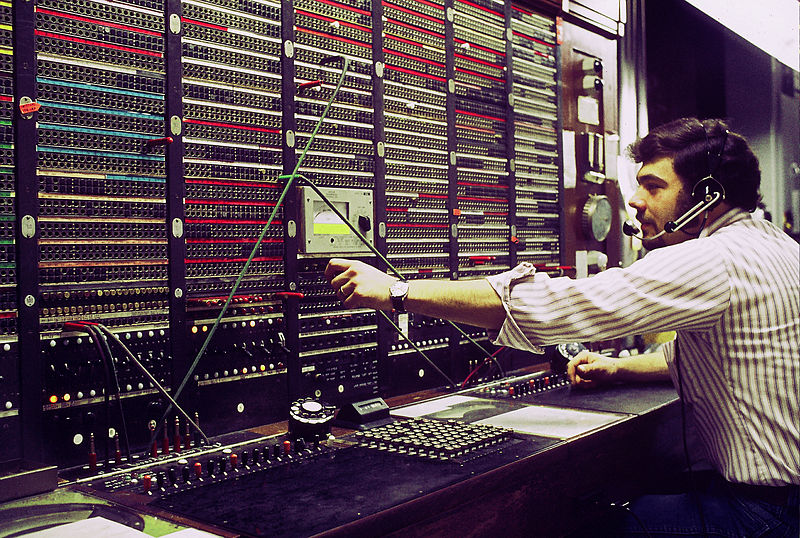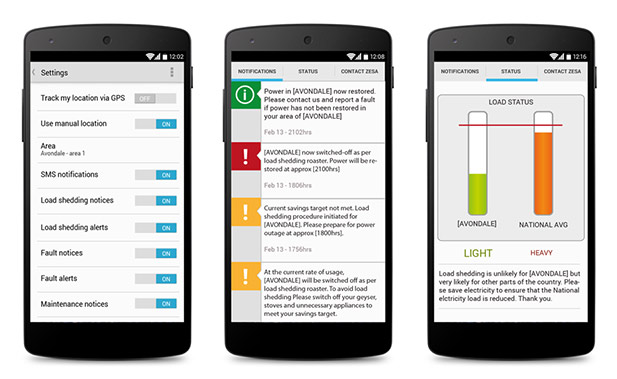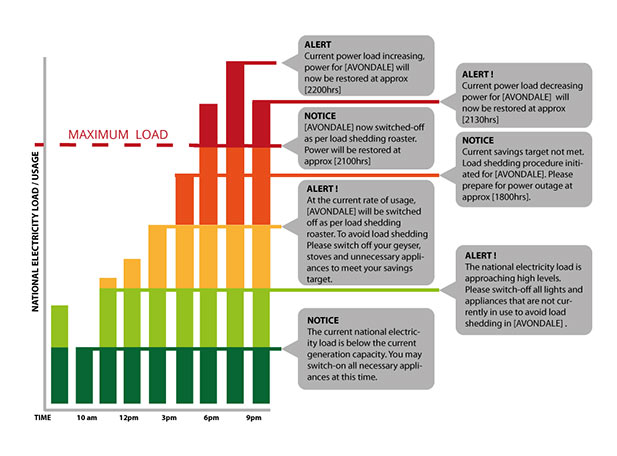
Today most of the African continent is in pitch black darkness. literally!
The Zimbabwean government, like a number of other African governments, has not – for one brilliant reason or the other – invested in new electricity generation capacity. To put this into perspective, in 2014, 13 million Zimbabweans will rely on generation capacity that was designed to support at least half of our current population. This is mathematically suspicious and practically impossible. This lack of new generation capacity has resulted in a shortfall of available electricity against an increasing demand. We reached the tipping point in 2007 when ZESA officially introduced long term load shedding. Anyone will tell you that there is nothing romantic about having a ZESA sanctioned candle-lit family dinner on a Monday evening.
The bigger problem
What is load shedding exactly? Put simply, load shedding is the rationing of available electricity by switching off some users to ensure that electricity demand does not exceed available supply. If this is not done, the demand on the electricity grid will exceed the available capacity. This – as your grade one teacher probably taught you – “it can’t”. ZESA employs system controllers on a 24-Hour basis to balance out the grid by monitoring demand and supply. When demand shoots up, the system controllers systematically commence the switching-off of some users based on the load shedding priority roaster until demand matches supply. When demand eases, the system controllers will restore supply to users in the same systematic way.
This is much more complicated than it sounds. Electricity demand and supply fluctuates; at any given time, electricity demand and supply is bound to change due to various factors including weather conditions and time of day. This means ZESA’s system controllers are endlessly working the dials to ensure that demand is always just below supply. Getting this right involves a bit of mathematical wizardry. Now, when you factor in wide spread power faults and vandalism (which a lot of users confuse with load shedding) it all becomes that much more unpredictable. But it gets even more complicated.
Unlike water supply where reservoirs can be built to buffer water levels against unpredictable demand and supply variations. Electricity in our case cannot be stored. At any given time, we can only use the electricity that is being generated at that exact same moment. ZESA has to coordinate all this, often at least a day in advance.
At Kariba, Hwange, Munyati, Bulawayo and Harare, the power stations will synchronize power generation to meet demand in the rest of the country. During off peak hours when supply exceeds demand, the power station generators are put on idle or switched off while repairs and maintenance work is speedily done. During peak hours they are throttled up to maximum capacity again. To go off without a glitch, all this has to be a well-coordinated symphony of engineering brilliance. Given our outdated equipment and broken systems, it’s not going to happen without a glitch, try as we might. Put into perspective, load shedding in Zimbabwe could be worse, but it isn’t. The better question to ask is could it all be improved? Without a second thought, I think so.

The ‘demand problem’
The extent to which we experience load shedding is based on two primary factors, electricity demand and supply. While ZESA’s system controllers can tweak power generation at our power stations in response to electricity demand, they can’t tweak our electricity demand in response to power generation capacity without resorting to the abuse that is load shedding. If they could reduce our electricity demand when they needed to, it would theoretically mean that when demand is about to exceed supply, ZESA’s system controllers could simply reduce user demand until full generation is restored, or peak demand has passed. This would significantly diminish load shedding in the short term. But how can ZESA control electricity demand, after all, they’ve tried to reduce electricity consumption habits for years without much success.

I am convinced that the problem with ZESA’s current PR effort is that it does little to help us associate our electricity usage with load shedding. People just don’t directly associate their electricity usage with load shedding; somehow the two seem unrelated. To most of us, load shedding seems more like a random act of fate determined by a trigger-happy ZESA employee locked-up in a dingy underground switch room jam-packed with switches he occasionally flicks at random. Because of this, when we do get electricity we consider this our time in the lime light (pun totally intended) by using it unsparingly. The reality though, is that we could be one light switch away from exceeding the national generation capacity and plunging ourselves or someone else into total darkness for a few hours. The reason why electricity load shedding usually happens at night or early morning is because during those times we are all trying to use electricity at the same time, which is impossible, as any ZESA system controller will calmly assure you. If only we knew when it is a good idea to turn on the stove right?
Inspiration
I am certain the reason why most mobile phones are continuously recharged on time by their owners is because of their power status notifications. The beeps and buzzes that constantly alert the user when the battery is about to die, without these, your iPhone’s battery would quietly die in your pocket without so much as a whimper. But because users do get alerted, they’ll act quickly to address their mobile phone’s desperate moans. You’ll often find someone rushing uncontrollably towards a power outlet or wildly switching off some of their mobile phone’s functions to preserve the remaining battery life before their smartphone’s 30-second shutdown ultimatum is elapsed. I think this is an extraordinarily efficient way of getting people to respond to a situation that they have immediate control over. Just constantly remind them of the cost of inaction, throw in a bright red exclamation mark and a loud beep for added effect.

Our solution
Borrowing from this same concept, our solution will rely on alerts sent to users via SMS or a smartphone app. These won’t be typical alerts encouraging users to switch-off their geysers because it’s the right thing to do. No! The system will rely on a geo-location based bulk notification system. Users will sign up to the SMS alert system via USSD or download a smartphone app, a user can choose to allow the system to automatically track and update his or her location using GPS or cell tower triangulation, alternatively, a user could choose to update their location manually when they wish. Besides user location (and phone number for the SMS option) no other personal information is required.

The notification system will be entirely operated by on-duty ZESA controllers using a basic laptop connected to the Internet. Besides users’ mobile phones, a laptop is all the hardware that our solution will need, most of the work will happen in the cloud. A Google Chromebook laptop will typically retail for less than $300. In the cloud, the system will monitor current generation capacity and demand. Assuming that the ZESA grid system is too archaic to somehow connect seamlessly to our system, the controllers will input generation capacity levels manually at intervals. The ZESA load-shedding roster will be programmed into the system.
When the electricity demand approaches high levels, the system will refer to the load shedding roster to get the areas that are first-in line for some ‘blackout action’ if power supply is exceeded by demand. The system will send alerts to users in those locations notifying them of the impending blackout. Depending on the power savings needed, the notification will advice the users to either switch off most or a few of their electrical appliances. At short intervals, the system will notify the users of their current achieved savings against the savings target. When this target is not met the system will expand its notifications to more “less-priority” areas until the power savings target is met.
If the necessary power saving is still not met, ZESA system controllers will input the areas that will subsequently be switched off. The system will alert all users in these affected areas of the imminent power outage, we can even throw in a dramatic count down, how about that? During the black out, the system controllers, via this system, will continue to notify affected users of the current load status until power is restored.

Making it better
The system can even be more sophisticated than this, a user could request the load status from ZESA for their current area through the app or USSD at any time and get a response informing them of their current ‘load shedding likelihood’. It could also be used to anonymously report faults, outages, dangerous cables and vandalism directly to the ZESA system controllers in real time from the app or USSD interface. This will aid the rapid response to faults and hazards. ZESA can also use the system to notify users of scheduled and ongoing maintenance work to just the affected users at no added cost, this will likely be cheaper, wider reaching and more effective than TV and radio ads.

25 comments
Sounds good on the face of it, is this an idea or something already being developed? gravitating towards smart cities concept…umh
I like your thinking, its outside the box thinking that usually gets things done. Brilliant idea, why not try it out make a prototype and approach Zesa.
The only issue I foresee is leaving out the majority of people because of the need to to have a smartphone that you can install an app, unless if the app will be made for as many platforms as possible (like Whatsapp or FB) to make it available to as many people as possible.
Technically everything you have said can be done without a lot of stress.
We want less loadshedding not stupid applications
then go stay in America
Yet we have not the capacity to generate electricity as it stands, if a simple less costly app will help reduce load shedding what is the harm in having it implemented while a long lasting solution which has eluded us thus far is being worked out. In fact ZESA needs and is encouraging Independent Power Producers (IPPs) to come on board since they do not have the capacity to generate enough power.
This seems a workable solution as part of the problem is poor power management of power overall as well as inadequate generation capacity.
To call such a solution that could be a practical solution to a real and current problem displays a disdainful ignorance. Concerned your statement is contradictory, you want less shedding yet dismiss a idea that could provide just that. Thoughtless indeed.
Excuse me boss: dont you think less loadshedding is achievable when a particular solution is sought, found, and implemented??? And the ‘stupid’ application can actually lead to less loadshedding???
Built a similar crowd source plartform in collaboration with Kutana.org . We had the admin and front end facing app in release ready state. The project got stalled at Phase 2 coz of some issues with time my side. Willing to give out the source to any parties willing to take it further obviously with the involvement of Kubatana since they invested some resources to get it running.
muchiripo mukoma
Please email, am interested in reviewing your source code and getting a better sense of the work ahead
Ahhhh, email is russellmazonde@gmail.com
Great idea.
However we need to address certain national challenges in Zim before we can have meaningful projects like these.
1. The we don’t care attitude.
2. Zimbos jus find it difficult to support a fellow Zimbo.
3. Leadership crisis at both municipal and national level. The perm sec for Min of Energy obviously has other non-work related issues keeping him busy.
4. Lack of appreciation of local solutions.
5. Lack of appreciation of technology beyond cellphones and computers.
In my opinion the don’t care attitude is a little harder to deal with unless people make it their job to make sure the guys in charge feel the pressure from the people.
Zimbo’s not supporting fellow Zimbo’s – I feel this attitude is changing, when it’s as big an issue as this is I think you would be surprised at the groups of people that will come together.
Leadership is not something that can be addressed over night, it’s a long a drawn out process especially in Government, and not just Zimbabwe’s it’s a global thing.
Local solutions – I can’t say people have tried in the past. This is something I feel has changed, there is now local talent who can see a need for their skills locally, no need to jet off to the UK to make it. As dismal as some people think things are there are still opportunities in Zimbabwe, more so in the tech industry if you ask me.
The lack of appreciation of technology is changing as well, the older generation are being convinced by the younger generation that tech can make a difference and if done correctly save people time and money. Mindsets need to change, something that gets harder as you get older.
I feel the more solutions like this get given the time of day, the more receptive people will be.
I’m actually interested in possibly contributing to this initiative. I’m new to development, but may be able to contribute. Please direct me to where I can get linked in. Tx
WOW, awesome article.
Some good thought gone into it and am sure if the project was crowd sourced within Zimbabwe I am sure you would exceed the necessary funding required to roll this out.
I honestly feel it should be a ZESA initiative but lets not be fussy about this.
Anyone with Ministry connections, please get this into some sort of pipeline?
Well done gents, I love the initiative and I can’t wait for it to get off the ground. I really hope the suits up there will cooperate.
@techzim Good article and Idea
@zesa only in our dreams will you ever implement something like this
interesting but it doesn’t solve the problem. merely a distraction to cover up for 34 years of people sleeping on the job and getting away with no forward planning or foresight. nothing new here. why do we need apps to cover for plain incompetence?
When such an SMS comes I will up the heat on my stove to finish my cooking. Just like I run to the charger when my phone tells me I have 10 minutes of power left. I think that will actually increase the demand than reduce it.
tauera hako. four plates dzose bikai faster. hanzi garai madya magetsi anoenda
Thats rather a simplistic and flawed assumption based simply on your individual actions wekwazhou. It is reasonable to assume nobody or at the very least very few people want load shedding, just evidence of people switching to energy server bulbs has been an indication that Zimbabweans want to do the right thing and help.
Such an initiative as this will see people switch off lights in rooms they are not using, switch off their geysers, etc , why? because it saves them money and is something they can directly do to contribute to the lessening of load shedding, something they are currently denied or unaware off at least not directly so. Not everyone will be caught doing the same thing at the same time as your example seems to impute. While the phone example was meant to raise the issue of awareness, unlike the cell phone, there are more appliances in question and aspects to electricity consumption that do not demand an immediate rush to use more power but just the prudence of making sure that they are not consuming any more power like the said lights, geysers, air-cons etc.
One only needs to examine the evidence on the savings that were accrued just by the use of energy savers or comprehend the the COMPOUNDED effect off a simple act of switching off lights across an area on the demand placed on the national grid to realise the net effect of what this app could bring about.
The sad thing that is prevalent in this country is cynicism and skepticism that meets any novel or good idea that comes up. This may not be the panacea to our energy but one can see it can be a means to give a bit of power and awareness to the consumer who will then be empowered to make a decision. A state and option we are all denied at this stage.
Learnt so much about power distribution in this article. A lot of wrong assumptions I had. And the solution is so simple yet it really could make a huge impact!
Technology is already available and being used in Zim where an sms controller unit can turn off high usage electrical items like geysers (up to 40 % household consumption). Suggest a pilot scheme where ZESA installs these units in an area and instead of turning off the power completely, they only turn off the geysers via sms and back on via the same means when the demand stabilises again. I know of a company installing these units to control anything electrical in far off areas and the operator can control the electrical item from his cell phone from anywhere in the world.
A system is already in place to perform such a function. Its was installed back in the nineties. Its called a ripple control system. Its actually was resuscitated early this year by ZETDC in Harare. The problem that is there is vandalism by the public. People pay electricians a small amount of money for them to disable this in their homes. The ripple control system specifically turns off the geyser. An sms based system would never be approved because of the vulnerability associated with it. In an ideal law abiding country the ripple control system works wonderfully……… but well zimbos will be zimbos
buy tramadol online no prescription can you buy tramadol online – tramadol withdrawal 2010
are we there yet , or jus like always … we just sit back and hope someone will do it for us .